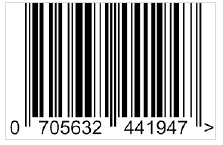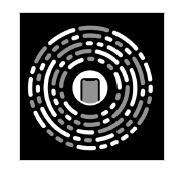
 Data Structure
Data Structure Networking
Networking RDBMS
RDBMS Operating System
Operating System Java
Java MS Excel
MS Excel iOS
iOS HTML
HTML CSS
CSS Android
Android Python
Python C Programming
C Programming C++
C++ C#
C# MongoDB
MongoDB MySQL
MySQL Javascript
Javascript PHP
PHPPhysics
Chemistry
Biology
Mathematics
English
Economics
Psychology
Social Studies
Fashion Studies
Legal Studies
- Selected Reading
- UPSC IAS Exams Notes
- Developer's Best Practices
- Questions and Answers
- Effective Resume Writing
- HR Interview Questions
- Computer Glossary
- Who is Who
What are the differences between Fastag, Barcode and NFC?
Let us understand the concepts of Fastag, Bar Code and Near Field Communication (NFC).
FasTag
FASTag is an electronic scanner system used for toll collection in India, which is operated by the National Highway Authority of India. It incorporates the Radio Frequency Identification (RFID) technology for doing toll payments either prepaid or from savings accounts which are linked to it or directly toll owner.
The RFID enabled sticker which is fixed to a vehicle’s windshield, and a reader at the toll booth are used to scan this card and wirelessly and automatically processes the payment.
When we pass a FASTag-enabled toll plaza, we don’t need to stop our vehicles to make cash payment for the toll fee. We can keep driving and the fee will be paid automatically.
Bar Code
A bar code reader decodes the data contained in the barcode and sends it to the computer. It produces a beam of light or a laser beam to read barcodes which is reflected by the bar code image.
A light sensitive detector which is present in the reader identifies the bar code by recognizing special bars on both ends of the image. With the help of these special bar’s reader is able to identify whether the bar code has been read right side up or upside down.
Once a barcode is identified by a bar code reader it decodes it and converts the individual bar patterns into numeric digit code that can be read by computer. After decoding the barcode it enters that data into the computer as a text.
Let us see some Pros and cons of using barcode −
Advantages
The advantages of using bar code are as follows −
Accuracy
Productivity
Time saving
Inventory control
Employee training
Disadvantages
The disadvantages of using bar code are as follows −
Physical damages
Label damages
Range
Cost
Security
The sample image of barcode is as follows −

NFC
NFC stands for Near Field Communication. NFC operates within a radius of about 4 cm and also provides a wireless connection between your device and another device. It allows for two-way communication, where both the devices involved are able to send and receive information. This NFC connection does not depend on Wi-Fi, 3G, LTE or otherwise, and it doesn't cost anything to use.
With the help of a credit card which is linked to the device it is helpful to make payments by simply holding your device near an NFC-enabled payment machine. There are many other uses for NFC as well. Examples include: Paying a fare on public transit, such as a bus or train
The sample image of NFC is given below −


